In the harsh Russian climate, you cannot do without warm outerwear in the autumn-winter period. And in the spring, the return of cold weather is not rare. Each wardrobe or pantry hides for the time being a demi-season coat, which will then be replaced by a winter coat insulated with filler and fur details. The very outerwear, which will not only warm in bad weather, but also represent our image in the cold season of autumn and winter. And like all clothes, it needs periodic cleaning (or washing). Dry cleaning services, which have grown pretty much in price from time immemorial in Soviet times, are increasingly making consumers think about whether to wash their coats in a washing machine and not spoil the thing, while saving a lot.

Preparation rules
You can wash the coat in such a way that it does not sit, does not deform, does not shed, does not become covered with spools and is freshened up, gets rid of dirt and stains in the collar area, cuffs or sleeve edges, in the area of carrying bags and pockets. For this, it is only necessary to observe the immutable rules of preparing the coat for washing in the washing machine, so as not to regret the results.

Learning the shortcut
First you need to determine whether it is possible to expose the product to water procedures, carefully studying the information indicated on the coat label. They will help establish the composition of the material (natural or artificial) from which it is made: top of the product, lining, decoration.In addition, from the icons on the label, you can determine whether washing is allowed in this particular case: manual or automated, using a washing machine. If the icon is not crossed out (a basin or a square with a circle inscribed in it, depicting a washing machine), then the coat can be washed at home.
If the manufacturer has crossed out the corresponding icon, all responsibility for the actions to bring outerwear in order falls on the shoulders of the consumer, since, at best, dry cleaning is prescribed for the product.

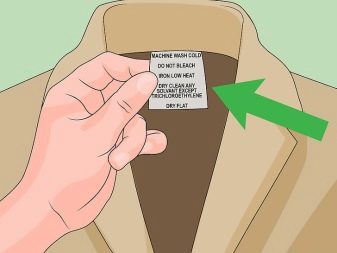
We take into account the material
Having decided on washing in a washing machine, you need to pay attention to the behavior of various coat materials in the process: natural, artificial (synthetic), mixed.
A demi-season coat made of natural materials, sewn from cotton, wool, drape, cashmere, suede, can be machine washed with the permission of the manufacturer indicated on the label, carefully observing the delicate washing regime without spinning so as not to deform the product.
If the manufacturer is against it, it is better not to take risks and use alternative dry cleaning, at worst, hand wash. The cost of a coat of such materials is not comparable with the savings from washing.



Suede will also require special tools for leather products. A velvet pea coat is unlikely to stand machine wash, just like a product with leather sleeves, not to mention a leather coat. Any skin - natural or artificial - will not survive a meeting with either a basin or a machine. A boucle can well be carefully washed with a delicate, non-spinning mode.
How to wash your own autumn from polyester dirt or a Bologna coat (that is, from synthetic materials) yourself, the pictogram on the label “Machine Wash” and the temperature of the water at 40 degrees will indicate.
A winter coat is usually insulated with a filler, natural (for example, feather-down) or artificial (synthetic winterizer, holofiber). A product with a camel filler is best attributed to dry cleaning. Sometimes the manufacturer allows it to be washed manually. Downy can be washed in a special mode in a machine, if it is quilted with the top of the product. You can also wash a synthetic winterizer or a coat with holofiber: the stitch will not let the filler slide down, it will allow you to keep the shape of the product.


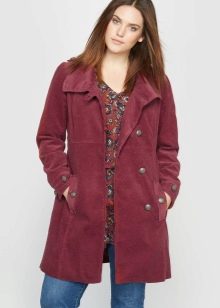
It is not difficult to tidy up outerwear at a synthetic winterizer or with a holofiber at home using an automatic machine; moreover, it can be wrung out using a centrifuge. It is undesirable to squeeze down a product in this way. It is necessary to allow the water to drain and then gently straighten, break the lumps of fluff, evenly distribute it between the top and the lining.
The lining is usually made of artificial fiber (polyester or viscose). When giving shape to a washed coat, it is necessary to ensure that the lining also straightens well and does not subsequently peek out from under the cuffs or hem of the product.
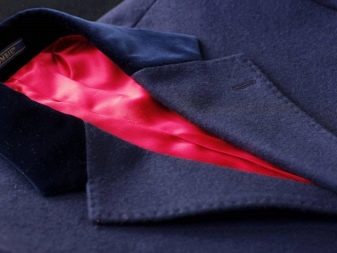
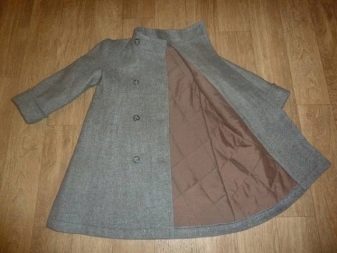
Colors
The color of outerwear subjected to machine wash should not be affected in the process: shed, acquire unusual shades and stains, whitish spots. Much depends not only on the selected mode, but also on the detergents used.
You should first check the dye's resistance to water procedures.
It is enough to try to wash a small piece of cloth in warm water with detergent. If the water does not stain, then the product does not threaten the damaged appearance from the water procedure.
A white coat can not always be subjected to additional bleaching, it depends on the composition of its material. It can be useful for a cotton product; viscose or polyester fabric can easily turn yellow permanently and lose the strength of the fibers.
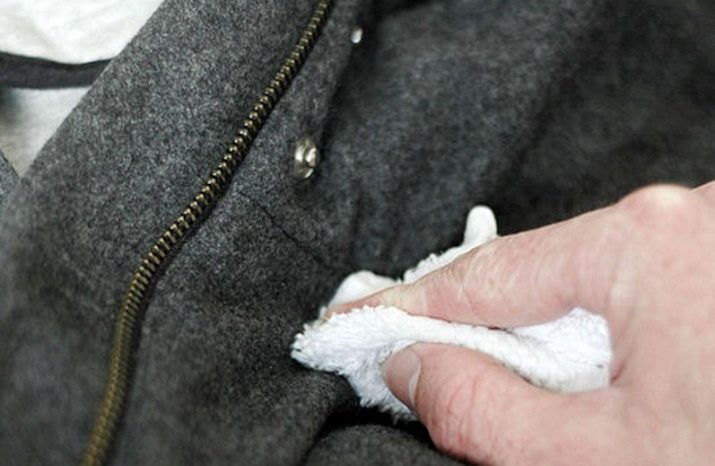
A light product is also quickly contaminated, but it will not be possible to use bleach.The fashionable black color of outerwear may lose its intensity, depth with frequent washing, the appearance of an extraneous shade is not excluded. Should pick special detergent for washing black productswhich will retain the color of the product longer. For bright colors, there are also detergents that extend the life of the product.

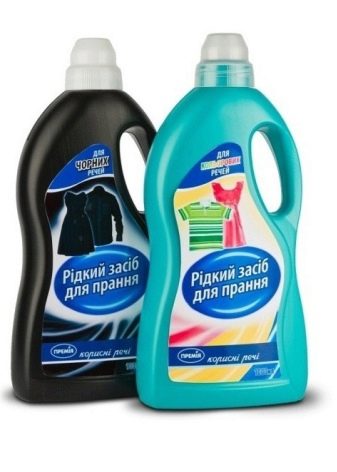
Cleaning products
All washing powders and liquid products, gels are differentiated according to the purpose. It is enough to familiarize yourself with the manufacturer's instructions on the package and specify for which clothes the material is intended and what colors the product is intended for, whether it is suitable for machine wash or only for hand wash. Typically, the word “Automatic” on a box or bottle immediately warns about the intended use of the contents for the machine process. When washing outerwear, it is preferable to use liquid products, gels or fine powders, traces of which do not remain on the fabric at the end of the process.
You can use rinse conditioner to better remove the remnants of the detergent if it is not in the composition of the gel used (the so-called 2 in 1).

Choose a program
You should first familiarize yourself with the capabilities of the home appliance when washing delicate items such as a coat. Modern models have a large number of various functions designed to facilitate home washing. It is not difficult to choose the right option for a particular case on your own. The most modest washing machines have a repertoire mode "Handwash", providing a gentle process for delicate fabrics.
Of great importance for a qualitative result is the temperature regime, which, as a rule, is tied to the washing regime.
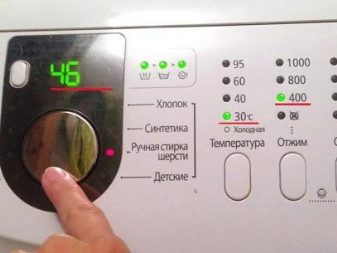
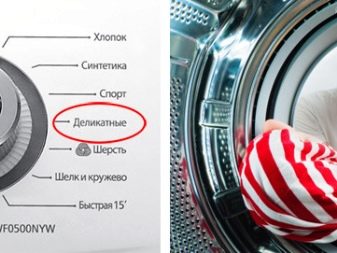
Natural and artificial materials coat, filler rather low water temperature (maximum 30-40C.) In accordance with the composition of the product, you can choose the modes "Synthetics 40", "Cotton 40", quick wash "Mini 30" for mixed fabrics "Mix 30" , "Eco Cotton 40", "Wool 40". Higher temperatures can lead to shrinkage of the product and its deformation, discoloration, and spools. There are models that provide washing in cold water. This is the best mode for products made of wool, with camel filler. There are special programs for washing wool and down products, they are indicated by the corresponding icons - pictograms: “Skein of wool” and “Feather”.

It is important to program in the washing process an additional or repeated rinse in order to completely free the product from the remnants of detergents and to avoid subsequent stains on the fabric after drying.
To wash items that cannot be wrung out, it is necessary to turn off the spin process (centrifuge) in the program or reduce the number of revolutions of the centrifuge to an acceptable one. In the “Hand wash” mode, spinning is usually not provided.
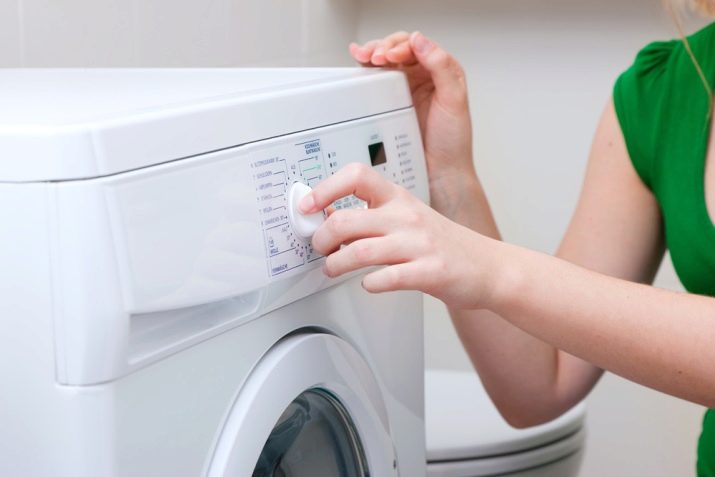
Step-by-step instruction
Properly wash the coat in the washing machine at home and get a good result will help following a certain sequence of steps:
- We study the label on the coat, determine the possibility and the proposed washing conditions; match the previously explored features of a home washing machine.
- Empty the pockets of the coat, remove (unfasten or gently steal) the fur and large metal parts, fasten all the available zippers (and also on the pockets), turning the product inside out.
- Carefully load the item into the car.
- Close the drum, measure and load the detergent selected in advance in the right amount.
- We turn on the automatic machine in the network, turn the water regulator to the working position.
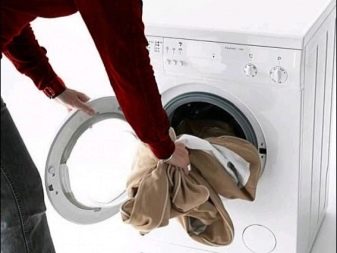
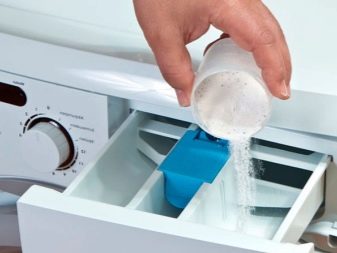
- We install on the control panel of the machine a pre-selected washing program ("Hand wash" or material + temperature, "Extra rinse", centrifuge turns).
- Click the button that launches the program.
- At the end of a given program, open the drum; carefully removing the coat, immediately place it on the “shoulders” (hanger) or on a place prepared in the bathroom for the outflow of excess water.
- When excess water drains, the coat can be squeezed slightly without twisting to remove excess water and gently spread so that there are no creases.
- The coat is placed in a well-ventilated place to dry.
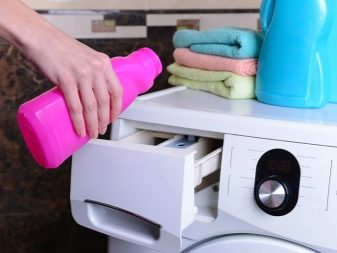

How to dry?
Improper drying after washing can adversely affect the appearance of the coat, deform it. In places of creases and folds of the fabric of the product dye streaks may form. For vertical drying, you can use a hanger ("shoulders") of a suitable size so that the shoulders and the back of the clothes are not stretched. Can be dried horizontallyby spreading and straightening the coat according to the shape of the product. You will have to follow the process and turn it over for even drying. In both cases, the place should be well ventilated so that the thing does not absorb extraneous odors or acquire a musty, moldy aroma.
You can not dry the coat on batteries and other heating devices, in direct sunlight: it can become stained, sagging, creases, burn out in places.
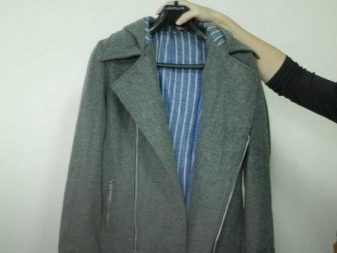
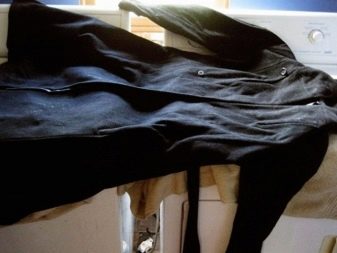
How to remove stains?
It is advisable to try to remove the stains on the outer clothing before starting the general wash. It is ideal to do this at home if you have to be patient. The main thing is not to delay the moment of elimination: the fresher the stain, the easier it is to remove. It would be nice to know the nature of the spot. If blood from an accidental wound accidentally gets on your clothing, you just need to wash it off with plenty of water first, in no case using soap. Then, with subsequent washing, there will be no trace of blood protein left with the detergent.
It is more difficult to remove traces from the writing pen; they must be pre-treated with hydrogen peroxide or a solution of citric acid, trying not to leave a halo.
For this, treatment with a tampon or cotton pad (or cotton swab) is carried out from the periphery to the center of the spot, after wetting the area around it with water. A good result is the use of conventional hair spray.


Relatively fresh grease stains are removed with a solvent (such as gasoline), not bad if it is possible to first remove excess fat by sprinkling with salt or starch, or by wetting with a cloth and a heated iron. Modern products - stain removers, specialized (for certain spots) and universal (for any type Vanish), will help to cope with the task no worse than home life hacks from grandmother's advice. You can also try to solve the problem with fuel oil with the help of home chemicals, if you don’t feel sorry for the coat at all. Nevertheless, dry cleaning with the help of professionals is more reliable.
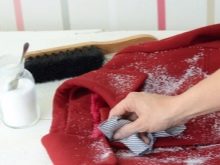
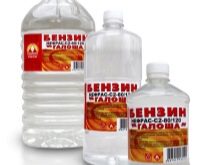
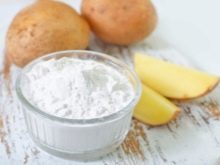
What to do if you can’t wash?
If the manufacturer of your thing is categorically against water procedures in any mode (both manual and automated), it remains to rely on dry cleaning. You can try to refresh the coat manually, using a brush or sponge, slightly moistened with the foam of a detergent solution, or simply take it to the nearest dry cleaning service and entrust your favorite item to specialists.
The dry cleaning procedure is much more expensive compared to home washing, but there is no risk of spoiling and losing the product forever.

If dry cleaning is not affordable at all, and the coat is not too new, you can still try to take a chance and wash it gently, despite the prohibitions of the manufacturer. But this is completely your decision and all your risks. Be prepared for the need for a new purchase.
Strict adherence to the recommendations of an army of specialists: manufacturers of outerwear, washing machines, and cleaning products will save property and finances.
For how to properly care for your coat, see the next video.










